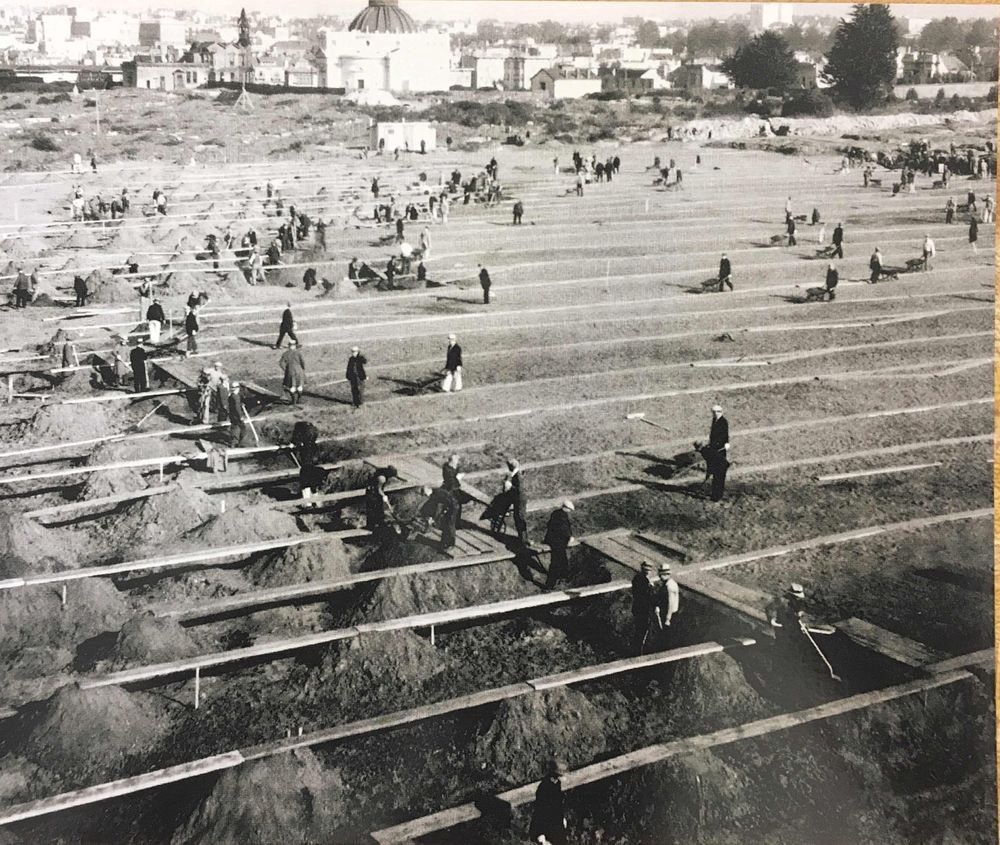The Dead Outnumber The Living In This Strange Town

By a very chilling ratio of 833 to 1.
Colma, California is your average small town—except for the fact that it’s home to 1.5 million dead bodies and fewer than 2,000 living citizens. Nicknamed the “City of Souls,” the town (only 1.9 square miles) hosts 17 cemeteries, with some of its most notable residents being Levi’s denim founder Levi Strauss, Bank of America founder A.P. Giannini and baseball player Joe DiMaggio.
So why the hell are there so many cemeteries in one cramped town? Well, let’s go back to the mid-1800s, when the California gold rush was just beginning.

To briefly brush up your American history: Someone accidentally stumbled upon gold in 1848. Rumors began circulating and President James K. Polk confirmed the discovery to Congress. And that was all it took for a flood of people from the east coast and even other countries to enter California in hopes of getting rich quickly. The 49ers (so-called because they flooded the state in 1849) made San Francisco’s population jump from 812 residents to about 25,000 residents in just two years.
So again: Why the hell are there so many cemeteries in one cramped town? Hang on, I’m getting there. Without modern medicine and plumbing, diseases such as cholera were rampant. On top of that, California’s new residents were dying of accidents left and right.
As San Francisco’s new residents croaked, the need for more cemeteries grew. Dozens of cemeteries were being put up, but cemetery owners started running out of space. Finally, they started looking into hosting bodies in Colma in the 1880s, with the first Colma cemetery opening in 1887.

Overwhelmed, and believing cemeteries caused the spread of disease, San Francisco announced in 1900 that the land was too precious for the dead. For the next 14 years, no new burials were allowed within the city, and all bodies were pushed outside to neighboring towns. Once 1914 hit, San Francisco realized that simply prohibiting new bodies from being buried was not helping them in terms of space—so eviction notices were issued to all cemetery owners in the city limits, requiring them to dig up the already-buried bodies and move them to other cemeteries.
That means over two dozen cemeteries already incorporated within the city of San Francisco had to dig new graves in Colma, dig up their already-established graves, then transport the bodies about 10 miles outside the city (without cars) to the newly-dug resting places. Just seeing pictures of the event reminds me of “Holes,” only Stanley Yelnats would’ve probably tried running away from camp A LOT earlier.
With the estimated 150,000 bodies transported in the early parts of the 20th century and the hundreds of thousands of deaths after 1914, Colma’s body count started to add up. Estimating that the population in Colma currently sits at just 1,800 living residents, the dead outnumber the living by about 833 to one. The living residents find it humorous, though, coining the slogan “It’s great to be alive in Colma.”
